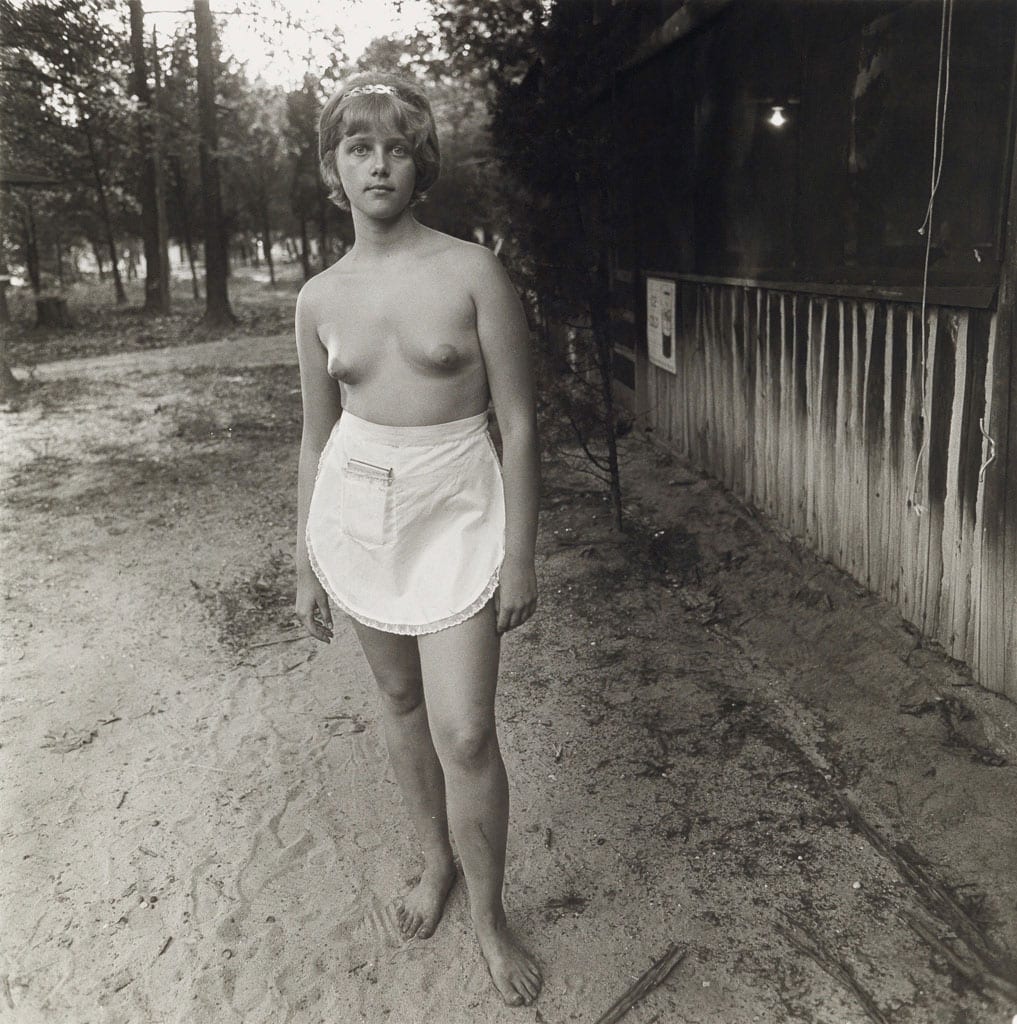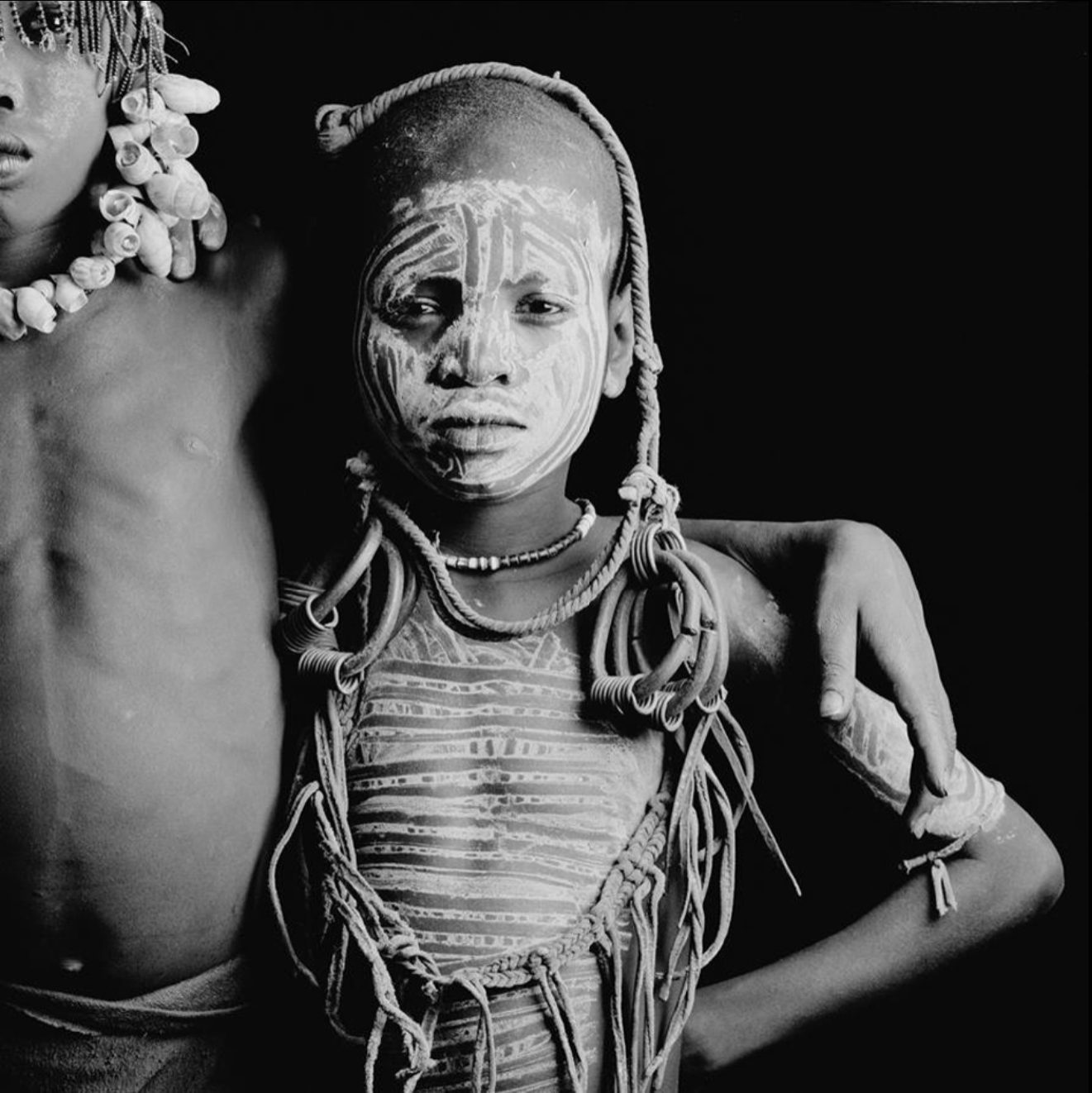SEPTEMBER 14 – NOVEMBER 6, 2021
Shortly after an infant is born, they open their eyes. As their power of perception grows, their first fascination is with faces. We have developed a constant perceptive interest in reading or gazing at the faces of others. It becomes the way we initially make sense of others. The expressive features of a person are largely revealed through their face. We initially look at portraits and, after first glance, try to intuit aspects of the inside of whoever is pictured or captured in the photographic lens. We use the visible to help reveal the invisible. Historically for photographers, the human face has been a complex and rich subject. It has been a mainstay of photography since its birth. Learning how to take, or make, a portrait that can reveal a ”truth” or an understanding of a subject is often a test of a photographer’s mastery and visual insight.
-

Diane Arbus
Young Couple in Washington Square Park, NYC Add to cart -

Diane Arbus
Mildred Dunnock, N.Y.C. Add to cart -

Diane Arbus
Jorge Luis Borges In Central Park, N.Y.C. Add to cart -

Diane Arbus
A Young Waitress at a Nudist Camp, NJ Add to cart -

Diane Arbus
A Young Negro Boy, Washington Square Park, N.Y.C. Add to cart
-

Kimiko Yoshida
RorschachYoshida LXXXVI (Monna Lisa) Add to cart -

Kimiko Yoshida
RorschachYoshida LXXXIII (Isabel de Porcel) Add to cart -

Kimiko Yoshida
RorschachYoshida LXX (Hugo Ball L) Add to cart -

Kimiko Yoshida
Rorschach Yoshida XCVI (Venus) Add to cart -

Kimiko Yoshida
Rorschach Yoshida LXXXVIII (Primavera) Add to cart -

Kimiko Yoshida
KyotoKimiko (Genji/Rembrandt) Add to cart -

Kimiko Yoshida
KyotoKimiko (Furisode/Philippe de Champaigne) Add to cart
Shortly after an infant is born, they open their eyes. As their power of perception grows, their first fascination is with faces. We have developed a constant perceptive interest in reading or gazing at the faces of others. It becomes the way we initially make sense of others. The expressive features of a person are largely revealed through their face. We initially look at portraits and, after first glance, try to intuit aspects of the inside of whoever is pictured or captured in the photographic lens. We use the visible to help reveal the invisible. Historically for photographers, the human face has been a complex and rich subject. It has been a mainstay of photography since its birth. Learning how to take, or make, a portrait that can reveal a ”truth” or an understanding of a subject is often a test of a photographer’s mastery and visual insight.
In many societies – i.e., American Indian, Shaman, Aboriginal, members of these cultures were reluctant to be photographed. The assumption was that the camera could somehow steal their souls. This phenomenon was an acknowledgment of the mysterious power of photography. It could take someone’s essence. If one surveys the selection of pictures that comprise our exhibition “Facing Forward,” one of the first observations is that it is a large cross-section between ethnographic, fashion, photojournalist, and fine-art-based photographs. The face – as a subject, seems to have universal relevancy.
Photography’s history of being presented as ”evidence” or as a way to confirm identity has made it an omnipresent form of presentation. The camera, simply stated, records and preserves the information that is put in front of it. The well-known psychologist Erik Erikson observed that “In the social jungle of human existence, there is no feeling of being alive without a sense of identity.” Identity grounds us and connects us to our larger world. Relationships are often expressed as well as nurtured through photography. Photographers and other visual artists have recognized this and produced portraits that have captivated viewers. Our levels of engagement, in terms of desire, security, memory, and our quest for knowledge, make the images in the exhibition meaningful and penetrating. We process the familiar and the unfamiliar in different ways. Humans are curious social animals, and we have a natural interest in the lives of others and a desire to know our origins. Therefore, photography can be viewed as a means of enlarging our world.
This show is not meant to present a study in social science or anthropology. It is a collection of myriad images that present our fellow humans as memorable subjects. The pictures should transport us from familiar day-to-day surroundings and remind us that we all share differences and similarities.
A photograph is only meaningful if it stops us for at least a short time and engages our other senses. The best images are ones that find a way to connect us to a world that is past or present, or imagined. As the English poet John Donne wrote: ”No man is an island, entire of itself; every man is a piece of the continent, a part of the main….” Continuing this metaphor, the camera and the portrait created by it have become the vessel that unites us.























